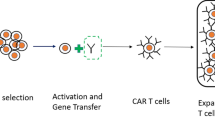Abstract
A hemopoietin with the ability to accelerate both platelet and granulocyte recovery after intensive chemotherapy would have great clinical utility. The recombinant fusion protein composed of human granulocyte-macrophage colony-stimulating factor and interleukin-3 (PIXY321), showed some promise in early adult trials. However, studies for pediatric patients are limited, and there are no systematic data on the pharmacokinetics of PIXY321 given over prolonged periods at current dosage levels. Purpose: To determine the safety, clinical effects and plasma concentrations of increasing doses of PIXY321 in children treated with myelosuppressive chemotherapy. Methods: A total of 39 children with relapsed or high-risk solid tumors were enrolled in this phase I/II study. PIXY321 was administered once or twice daily by subcutaneous injection in total doses of 500 to 1000 μg/m2 per day for 14 days after each course of chemotherapy with ifosfamide, carboplatin, and etoposide (ICE). Pharmacokinetic studies were performed on day 1 of the first course in 33 patients and repeated on day 14 in 13 patients (once-daily schedule only). Results: Although mild local skin reactions and fever were frequent, no dose-limiting toxicity was identified at the maximum dose studied (1000 μg/m2 per day). There were no statistically significant differences in chemotherapy-induced hematologic toxicity with increasing doses of PIXY321 or with twice-daily vs once-daily dosing. On day 1, the median PIXY321 clearance was 657 ml/min per m2 (range 77–1804 ml/min per m2) and the median half-life was 3.7 h (range 2.1–20.8 h). On day 14, clearance increased in all patients studied (median increase 63%), with a corresponding decrease in the median 12-h concentration (from 1.2 to 0.25 ng/ml). Maximum concentrations were <1 ng/ml in 81% of patients, and only two patients had maximum plasma concentrations equivalent to those required for consistent activity in vitro. Conclusions: The recombinant fusion protein PIXY321 proved safe in children treated with myelosuppressive ICE chemotherapy but had no demonstrable clinical benefits. The pharmacokinetic studies suggest that the observed lack of hematologic benefit may be explained by low plasma concentrations resulting from increased clearance with prolonged administration. Moreover, the significant increase in PIXY321 systemic clearance in the absence of increased circulating myeloid cells suggests that the upregulation of either extravascular compartment hematopoietic progenitor cells or nonhematopoietic cells may play an important role in controlling circulating concentrations of this unique cytokine. These findings highlight the importance of a thorough assessment of the systemic disposition of cytokines when determining the dose and schedule necessary to achieve clinical activity in patients.
Similar content being viewed by others
Author information
Authors and Affiliations
Additional information
Received: 29 January 1997 / Accepted: 9 May 1997
Rights and permissions
About this article
Cite this article
Furman, W., Rodman, J., Tonda, M. et al. Clinical effects and pharmacokinetics of the fusion protein PIXY321 in children receiving myelosuppressive chemotherapy. Cancer Chemother Pharmacol 41, 229–236 (1997). https://doi.org/10.1007/s002800050733
Issue Date:
DOI: https://doi.org/10.1007/s002800050733




